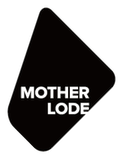Lately one of the first things we’ve been getting our new clients to do is to write their manifesto. What’s that? It’s somewhere in between a vision statement and customer promise and it’s a quick way to help us determine what your unique value proposition (ie what your business does better than your competitors) is.
Here are some ideas for writing your manifesto.
- Think about the product or service you sell. If you had to explain to someone who was completely new to your industry what makes the difference between an excellent version of that product (or service) and a subpar one, how would you do it?
- Write the first draft in short sentences that all start with these words: “A great (product) should be….”. We can improve the prose later on.
- The first draft should be ten to fifteen sentences long.
- It should *not* be about your company or your product. It should be an objective set of rules or disciplines that an outsider can use to determine the level of quality of products like yours.
- Once you’ve got that down, sit down with someone who can help you turn it into great prose. It should inspire, entertain and the idea of living up to it should scare you a little bit.
- The final product should look great as a poster hanging on the wall of your office – or your customer’s office.
One you’ve got that written down, it will form the basis of your unique value proposition. It also helps educate your customers about how to know what they should be looking for when they are buying a product like yours.
For example, every marketing strategy we write for clients contains our marketing manifesto. It’s our promise to them and a constant reminder to ourselves about the seven key design principles that set great marketing apart from rubbish.
We commit that any marketing asset we design will conform to the following design principles:
- Aesthetically pleasing. According to research conducted by the University of Texas, “both fitness-related evolutionary theory and socialization theory suggest that attractiveness influences development and interaction.” We believe this also applies to marketing. An aesthetically pleasing piece of marketing, whether it is a website, brochure, advertisement or flyer, will on average attract more attention than an unattractive piece.
- Emotionally resonating. It is well understood that people tend to make decisions for emotional reasons and then support those decisions with logic and facts. Human decisions cannot be explained solely by rational imperatives but are strongly influenced by emotion. Theoretical and behavioural studies provide a sound empirical basis to the impact of the emotion in guiding choice behaviour. Therefore we should use our marketing to connect with the emotional centres of their brains as well as the rational centres. One way to do this is to include narrative elements. Our brains are designed to respond to and remember stories. If you communicate your value proposition by telling stories (eg customer anecdotes), it is more likely to be engaging and be remembered.
- Customer centric. First and foremost marketing should speak to the customer’s problems and offer our solutions. Benefits should come before features.
- Minimalist. Our mantra will always be “less is more”. The fewer messages we have on any page of marketing, the higher the chances that our customer will absorb them.
- Differentiation. Our marketing needs to stand out from what our customers are used to seeing – especially from our competitors. According to researcher Daniel Kahneman, our brains are designed to focus on things that run counter to what we are expecting to see. Neuroscientific studies suggest that dopamine is released when marketing engages attention and allows the customer to solve a small puzzle – and this creates positive associations. This differentiation might come from any combination of design, messaging or focus.
- Call To Action. Every piece of marketing should strive to have a call to action that is clear, time dependent and offers easily-understood value. This is required to prompt the customer to either a) feel a sense of urgency to make contact with us today to get them into the sales pipeline or b) feel a sense or urgency to add themselves to our list for future communication. A CTA is an instruction to perform an obligation-free and risk-free action to gain a benefit. One of the most common (and worst) mistakes in marketing is to assume people know what to do, and forget the call to action. Research into human psychology suggests that we have been conditioned by evolution and experience to obey suggestions or instructions to perform a task.
- Brand Values. Every piece of marketing we produce should reinforce our brand values as this – not your product or service – is your primary promise to your customer.
Once you’ve got your manifesto worked out, it can make a great piece of marketing in itself. How many of your competitors can state clearly the difference between the wonderful and the average?

